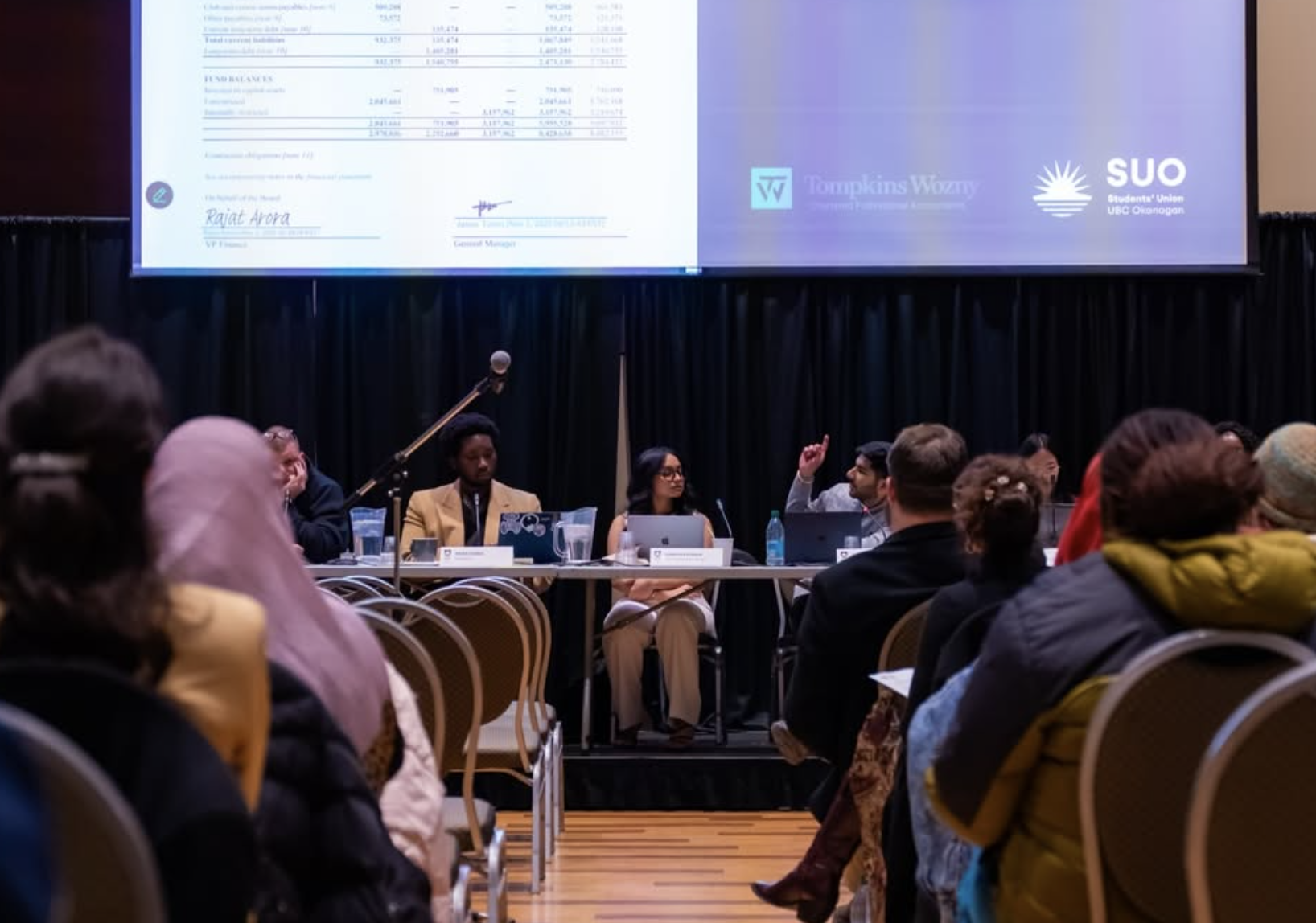One might argue that equality has been achieved between genders and ethnic groups in terms of representation and available opportunities in science, technology, engineering, and mathematics (STEM) in Canada. In fact, many STEM scholarships target women, gender-queer, and other historically marginalized minorities as affirmative action — the practice of increasing opportunities for underrepresented demographics — to increase diversity in university programs and workplaces. The significance of a diverse workforce and management team is not lost on institutions and businesses, as studies have found that non-homogenous groups demonstrate higher performance and group intelligence.
While affirmative actions and diversity initiatives strive to level the playing field, the stark reality remains that women, gender-queer individuals, and other minorities still grapple with underrepresentation.
Why do we witness a glaring absence of women and minorities in STEM, particularly in disciplines such as engineering? At UBC Okanagan, we find that the percentage of women in engineering is a mere 17 per cent.
How have long-standing systemic inequalities contributed to shaping our subconscious expectations for women, and affected the opportunities available to them today?
“Imposter syndrome” is one such example of the legacy of inequality and stereotyping that continues to shadow women and minorities, acting as a mental obstacle that hinders confidence and stifles opportunity in scientific academia.
In this exploration, we uncover the prevalence, causes, and ramifications of imposter syndrome. Alongside, we provide a platform for students at UBCO who are underrepresented through anonymous testimonies from students. Their narratives offer insight on their lived experiences of self-doubt, born from recurrent strings of sexism, racism, and other biases.
What is Imposter Syndrome?
Imposter syndrome was coined in 1978 by psychologists Pauline Rose Clance and Suzanne Imes from a study conducted with over 150 highly successful women — PhDs, respected professionals, and high academically performing students. A common phenomenon amongst the study participants was an intrinsic belief of them not being intelligent, but rather having convinced people around them to believe so. The women attributed their success to luck, or faulty judgment, and experienced persistent fear of being exposed as intellectually fraudulent despite evidence from their achievements. The study quotes:
“Despite outstanding academic and professional accomplishments, women who experience the imposter phenomenon persist in believing that they are really not bright and have fooled anyone to think otherwise.”3
Today, imposter syndrome is known as the psychological phenomenon of an individual’s chronic self-doubt and insecurity over their own competency in workplace and academic settings.
This is not to say that only women in high-achieving fields experience imposter syndrome. Since the introduction and exploration of this phenomenon, it’s been found that anyone can be impacted by imposter syndrome, though it disproportionately affects women, early career faculty, and minorities in fields they are underrepresented in — such as men in nursing.
Since the originating study conducted by Clance and Imes, further studies have been conducted to identify the prevalence of this phenomenon in other demographics, since Clance and Imes primarily studied the prevalence of imposter syndrome in white women. It is important to note that the originating study on imposter syndrome had also not considered the impacts of intersectionality on one’s likelihood of experiencing this phenomenon, which refers to the combination of discrimination and stereotyping based on race, class, gender, and other categorizations.
On the topic of imposter syndrome, one self-identified fourth-year woman engineer at UBCO stated:
“In my journey through engineering, I've grappled with a persistent sense of imposter syndrome that has shadowed my confidence. Despite my passion for the field, I've never quite felt like I truly belonged, perpetually questioning my abilities compared to my peers. This inner struggle has been the driving force behind my relentless pursuit of opportunities — from numerous co-op terms to research experiences and multiple team projects — all in an attempt to prove my worth. Yet, even amidst these accomplishments, doubts continue to linger, reminding me that the battle against imposter syndrome is ongoing. Additionally, in my courses, my lack of confidence has often left me feeling inadequate, doubting my intelligence and capability to receive good grades, despite knowing deep down that I am no less capable than my peers.”
What Causes Imposter Syndrome?
Picture a scientist. What do they look like?
Perhaps you’re imagining that grainy picture of Albert Einstein sticking his tongue out in the margins of your high school physics textbook.

Or perhaps you’re thinking of any one of this number of great celebrated scientists pictured in this image of the attendees of the Fifth Solvay Conference on Quantum Mechanics in 1927. Among them include several prestigious Nobel laureates, such as Erwin Shrodinger, Neils Bohr, and Werner Heisenberg.

From these photos, can you notice any similarities between the world’s most celebrated scientists? Or better yet, can you spot the one individual from these images who differs from this community from less than 100 years ago?
Here’s a hint: Marie Curie, the only woman among these “Greatest Scientists,” is in the front row, third from the left in the second photo.
When we dissect the roots of imposter syndrome, we inevitably confront the influence of history and the exclusion of minorities in science and engineering on societal expectations. These images unintentionally create the narrow perception that science is a domain that belongs to white men. As a result, these prominent figures become deeply embedded in our collective biases, influencing our idea of what a scientist "should" look like.
This not only perpetuates a narrow view of who may excel in scientific academia but can also deter young girls and minorities from aspiring to enter STEM fields. When the faces of celebrated scientists predominantly reflect a single demographic, it sends a powerful message about who belongs in these fields and who doesn’t.
Furthermore, stereotyping who belongs in science fields can affect the importance with which we assign individuals who do not fit within the norms. For example, Marie Curie herself was almost denied recognition for her research in physics. She was originally excluded from nomination for the Nobel Prize in Physics and not credited with her discovery of polonium and radium.
Impacts of Gender, Cultural Norms, and Stereotyping on Imposter Syndrome
Certain demographics face significant pressure to conform to gender and cultural roles assigned to them, which exacerbates the already difficult plight to a path in STEM. There are a plethora of expectations that society downs upon women and minorities that make achieving success in the workplace extremely difficult.
In one study, interviews with women surgeons led researchers to conclude on four types of biases affecting women surgeons on their experiences with imposter syndrome.⁴ Some of these biases included inequitable workplace factors, such as lack of parental leave, harassment, and being expected to meet the emotional needs of patients due to the stereotype of women being more nurturing. The study concluded that these additional stressors imply messages that women do not belong in these roles, which “can instill self-doubt and contribute to loss of self-esteem, burnout, and quitting specific jobs or the profession.”4
A third-year UBCO computer science student explained, “It’s a real problem for sure. Doesn’t help when you’re talked down to and underestimated by your male peers!”
Within the context of a group project in a university course, women are also more often expected to complete the secretarial and administrative tasks required (note-taking, for example). In a study conducted by the University of Michigan, it was found that minorities in student engineering groups were often assigned unimportant tasks, and their perspectives were not always considered valid by majority teammates. Hence, while their time is spent completing these tasks, it takes opportunity away from learning other facets of an academic project.
“Whether it be through the [tone] that my professors use towards me versus my male peers, or the secretarial roles that I am repeatedly expected to perform within my group projects, the difference between my experience from the men in my program is clear as day,” said a third-year engineering student. “Having to repeatedly prove and defend my competence and contributions is exhausting, and in having to constantly convince others of my capabilities, I struggle to convince myself. All this goes to foster the insecurities that have grown since entering university with regards to my own intelligence.”
Within academia, there also lies another layer of how society perceives the prestige within different science fields, particularly in the field of gender representation. Certain science fields, such as computer science and engineering, are dominated by men and are conveniently perceived as more challenging and rigorous. Fields that used to be dominated by men, such as psychology and sociology, also used to be considered academically prestigious — until the percentage of psychology PhDs awarded to men dropped to 30 per cent from 1975 to 2008 due to an influx of women entering the field.
“Since high school, I have always felt silly for being passionate about biology,” said a fourth-year UBCO science student. “All around me, people seemed to excel at more ‘important’ things — like engineering, physics, or chemistry. I felt like my interests weren’t as important, nor did they belong under the field of STEM. This was accompanied by negative attitudes towards affirmative action and so called ‘diversity hires’ by the people around me.”
“When I began to take leadership positions in university, I was surprised that people considered me to be skilled and intelligent,” she continued. “This brought with it imposter syndrome, which had me feeling like I wasn’t actually as good as they think I am, and that I had to work twice as hard to be the person they thought I was. This has stuck with me throughout university, as I’ve worked as hard as I could for people not to consider me or my passions as less important, which has inevitably led to burnout throughout different stages of my degree.”
Impacts of Imposter Syndrome Professional Advancement
It’s no secret that in order to succeed in STEM fields, technical skills and education are not the only contributing factors to finding high-paying jobs. Networking, negotiation, and mentorship are all helpful tools that can provide opportunities to rise in the ranks in one’s field.
Imposter syndrome and chronic self-doubt may instigate hesitations in people to assert themselves in workplace settings, such as seeking out introductions, promotions, and negotiating higher salaries. Reluctance to seek out career advancement opportunities can cause one to remain stagnant in their career, missing out on professional development.
“It’s hard to feel like I belong in engineering as a woman when I’m constantly surrounded by men,” admitted a second-year UBCO engineering student. “I’m worried I will never be taken seriously in my career and that I’ll have to constantly overachieve in order to overcome the biases against women in STEM.”
A research study published in the Journal of Organizational Behavior and Human Decision Processes found that women are less likely to initiate negotiations and more likely to experience anxiety around self-assertion. The study also found that women are penalized more by initiating salary negotiations, and were twice as less likely to be hired than men for negotiating their salaries. Evaluators deemed the women who negotiate as demanding, particularly from the perspectives of male evaluators. As stated in the study, for women, “sometimes it does hurt to ask.”
As one third-year engineering student at UBCO put it, “It’s hard to decenter the opinions that men have of me in my field, when we exist in a system when men’s opinions can make or break my success.”
Call to Action
Imposter syndrome is a deep-rooted and multifaceted issue. After banning and ostracizing women and minorities from academic institutions for centuries, we cannot expect not to have serious generational implications on how we view their belonging in academic spaces.
The “blame” for one’s experience of this phenomenon is not on the people who experience it. It is not necessarily the responsibility of women and minorities to miraculously “cure” their potential imposter syndrome through attendance of countless workplace conferences on “How to be a Girl Boss” or “How to Break Through the Glass Ceiling,” but rather the responsibility of our systems, institutions, and individuals to promote a safe learning environment.
One fourth-year engineering student at UBCO offered:
“Receiving an award or recognition as a woman in STEM makes it less likely for me to feel imposter syndrome. When you don’t fit the stereotype for an award or a position and win it anyways, you are reassured that something inside you truly earned that recognition. Recognizing men in STEM is equally meaningful and important, but there’s something about recognizing women that is really special.”
As an institution, UBCO Okanagan also has a critical role to play in being accountable to the policies and programs it preaches to follow. This entails establishing effective bias training and awareness programs for students and staff as preventative measures for harassment against minority students. It also requires active solicitation of feedback from stakeholders to inform them of their progress in meeting tangible diversity benchmarks and metrics.
In dismantling the grasp that our personal biases have on the expectations we set on marginalized groups, we must acknowledge the validity of women’s and minorities’ experiences in STEM fields. We must challenge our own assumptions, and actively work to not impose them unto our colleagues and peers. For a man in STEM, this could be as simple as offering to be a note-keeper for your team project. As a professor, this could be watching the tone with which you speak to students of different genders and backgrounds.



